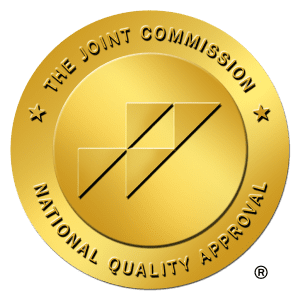
The overdose crisis in America has evolved far beyond single-drug use, creating a complex web of risks that many people don’t fully understand. While much attention focuses on individual substances like fentanyl or cocaine, a more dangerous phenomenon has been quietly driving overdose deaths to unprecedented levels: polysubstance use. This practice involves using two or more drugs together, either intentionally or unknowingly, and it’s becoming the norm rather than the exception in today’s substance use landscape.
What is Polysubstance Use?
Polysubstance use occurs when someone consumes multiple drugs within a short time period or simultaneously. The use of more than one drug, also known as polysubstance use, is common. This includes when two or more are taken together or within a short time period, either intentionally or unintentionally.
This dangerous practice can happen in several ways:
Intentional polysubstance use: Occurs when someone deliberately combines drugs to enhance effects, counteract unwanted side effects, or create a specific experience. For example, someone might mix stimulants with depressants, believing they “cancel each other out.”
Unintentional polysubstance use: Occurs when drugs are contaminated or mixed without the user’s knowledge. This is increasingly common with street drugs that contain fentanyl or other additives.
The Alarming Statistics Behind Polysubstance Overdoses
The numbers paint a stark picture of how widespread and deadly polysubstance use has become:
In 2022, more than half of the 69,893 people in the U.S. who died from a synthetic opioid overdose, such as fentanyl, also had a stimulant in their system, highlighting the dangerous intersection of different drug categories.
Among synthetic opioid–involved overdose deaths in 2016, almost 80% involved another drug or alcohol, demonstrating that pure single-substance overdoses have become the minority rather than the rule.
Historical data reveal this isn’t a new problem, but it’s getting worse. A study from New York in 2010 reported that 98% of the overdose cases involved more than one substance, showing the pervasive nature of polysubstance use in overdose deaths.
The trend extends beyond opioids. 70% of stimulant-related deaths now co-involve fentanyl, indicating that even people who primarily use stimulants like cocaine or methamphetamine are at significant risk of opioid overdose due to contamination or intentional mixing.

The Dangers of Polysubstance Use
Unpredictable and Amplified Effects
One of the greatest dangers of mixing substances is the unpredictability of the interaction. Whether intentional or not, mixing drugs is never safe because the effects from combining drugs may be stronger and more unpredictable than one drug alone, and even deadly.
Different drug combinations create unique risks:
- Depressants + Depressants: Combining opioids with ethanol (alcohol) or benzodiazepines dramatically increases the risk of respiratory depression and death
- Stimulants + Depressants: Mixing amphetamines or MDMA with opioids doesn’t create balance—instead, it masks warning signs and can lead to overdose when one drug’s effects wear off before the other
- Multiple Stimulants: Combining cocaine, methamphetamines, or other amphetamines can cause dangerous spikes in heart rate and blood pressure, potentially leading to a heart attack or stroke
- Overlap of opioids with other substances: Creates particularly deadly combinations that can cause severe brain injury or cognitive impairments
Delayed Recognition of Overdose
Polysubstance use can mask the typical signs of overdose, making it harder for bystanders to recognize when someone needs emergency help. The stimulant effects might temporarily counteract the sedating effects of opioids, creating a false sense of safety while respiratory depression occurs.
Treatment Complications
When someone overdoses on multiple substances, treatment becomes more complex. While naloxone (Narcan) can reverse opioid effects, it won’t address overdose symptoms from stimulants, alcohol, or benzodiazepines, potentially leaving the person in continued danger.
Common Misconceptions About Polysubstance Use
Myth 1: “Mixing Uppers and Downers Balances Out”
This dangerous belief leads people to think that combining stimulants with depressants creates a “balanced” experience. In reality, mixing stimulants and depressants doesn’t balance or cancel them out. In fact, the results of combining drugs are unpredictable, often modifying or even masking the effects of one or both drugs.
Myth 2: “I Know What’s in My Drugs”
The illegal drug supply is increasingly contaminated with fentanyl and other dangerous substances. Even experienced users can’t reliably identify what’s in their drugs without testing.
Myth 3: “Prescription Drugs Are Safe to Mix”
Many people assume prescription medications are safe to combine, but this isn’t true. Mixing prescription opioids with benzodiazepines or alcohol can be just as deadly as mixing street drugs.
Myth 4: “Small Amounts Are Safe”
Even small amounts of certain drug combinations can be lethal, especially when fentanyl is involved. The margin for error is essentially nonexistent.
The Role of Fentanyl in the Polysubstance Crisis
Fentanyl has fundamentally changed the landscape of polysubstance risk. This synthetic opioid is often mixed into other drugs without users’ knowledge, turning what might have been a non-fatal overdose into a deadly one. Xylazine was found in less than 1% of drug overdose deaths in 2015 and in nearly 7% in 2020, showing how rapidly the drug supply can change with new and dangerous additives.
Who’s at Risk?
Polysubstance use affects people across all demographics, but certain populations face higher risks:
- Youth: Despite relatively low overall substance use rates among teens, overdose deaths have been rising, often involving multiple substances
- People with chronic pain: Those prescribed opioids who also use alcohol or other medications
- People with mental health conditions: Who may use multiple substances to self-medicate
- Anyone using street drugs: Due to the increasing contamination of the illegal drug supply
Treatment Options for Polysubstance Use
Medical Detoxification
Safe detox is crucial for polysubstance users, as withdrawal from multiple substances can be complex and potentially dangerous. Medical supervision ensures proper management of withdrawal symptoms and complications. At specialized treatment facilities, medical professionals can safely manage the detox process, monitoring for:
- Seizures (common with alcohol or benzodiazepine withdrawal)
- Severe depression or anxiety (common with stimulant withdrawal)
- Physical complications from multiple substance interactions
Comprehensive Treatment Approaches
Effective treatment for polysubstance use requires addressing all substances involved, not just the primary drug of concern. This might include:
- Medication-Assisted Treatment (MAT): For opioid use disorder, even when other substances are involved
- Behavioral therapies: Such as cognitive-behavioral therapy and contingency management
- Dual diagnosis treatment: Addressing co-occurring mental health conditions
- Holistic approaches: Including nutrition therapy, exercise, and stress management
Ongoing Support and Aftercare
Recovery from polysubstance use often requires long-term support, including:
- Regular monitoring and testing
- Peer support groups
- Family involvement and education
- Continued medical and psychiatric care
Prevention and Harm Reduction
For Current Users
If you or someone you know uses substances, harm reduction strategies can save lives:
- Never use alone: Have someone present who can call for help and provide overdose reversal if needed
- Use test strips: Fentanyl test strips can detect contamination in heroin, cocaine, or other substances
- Keep naloxone nearby: Even if you don’t use opioids, contamination is possible in many street drugs
- Start with smaller amounts: When using unfamiliar substances or combinations, especially with injection drug use
- Don’t mix depressants: Especially ethanol with opioids or benzodiazepines
- Be aware of inhalants: These substances can be particularly dangerous when combined with other drugs
For Communities
- Expand naloxone distribution programs
- Support drug checking services where available
- Advocate for Good Samaritan laws that protect people calling for help during overdoses
- Promote education about polysubstance risks
The Path Forward: Comprehensive Solutions Needed
The polysubstance overdose crisis requires a multifaceted response that goes beyond traditional single-substance approaches. Healthcare systems, policymakers, and communities must recognize that polysubstance consumption of drugs can result in dependency/addiction, high-risk behaviors, psychopathology onset or other poor mental health outcomes, requiring specialized treatment approaches.
This means investing in:
- Training for healthcare providers on polysubstance use treatment
- Research into effective interventions for multiple substance use
- Policy changes that address the reality of polysubstance use
- Community-based prevention and treatment programs
Take Action: Your Health Matters
The dangers of polysubstance use are real and growing, but help is available. Whether you’re struggling with substance use yourself or concerned about a loved one, taking the first step toward treatment can save a life.
If you or someone you care about is dealing with polysubstance use, don’t wait for a crisis to seek help. Professional treatment programs can provide the comprehensive care needed to address multiple substance use safely and effectively.
Ready to take the first step toward recovery? Contact Grata House today. Our compassionate team understands the complexities of polysubstance use and is here to help you or your loved one find a path to healing and recovery. Your journey to wholeness begins with only a willingness—we’re here to support you every step of the way.
